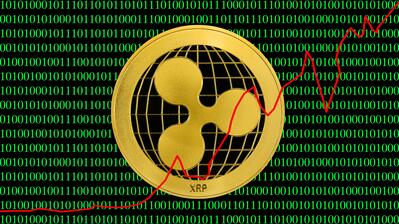Playing it cool: JOLTS, PMI, construction spending

- Nasdaq, S&P 500 red, Dow gains
- Comm csrv weakest S&P sector; Materials lead gainers
- Euro STOXX 600 index off ~0.2%
- Dollar edges up; bitcoin drops; crude gains; gold up >1%
- US 10-Year Treasury yield rises to ~4.26%
PLAYING IT COOL: JOLTS, PMI, CONSTRUCTION SPENDING
Investors kicked off a new month, quarter and the second half the year with a heaping plate of steaming data, most of which added cred to the narrative that the U.S. economy, while sturdy, is showing signs of softening.
Job openings in the United States rose by 5.1% in May to 7.769 million, according to the Labor Department's Job Openings and Labor Turnover Survey (JOLTS) USJOLT=ECI.
The increase was unexpected; economists expected that number to ease slightly, to 7.300 million.
The JOLTS report, which tracks labor market churn, also showed hires decreased by 2.0% and there were 10.1% fewer firings than in April.
But 2.4% more workers quit their jobs, pushing the quit rate to 2.1% of the workforce, from 2.0% the month prior.
"All told, most FOMC members will see little reason to get behind emerging voices for a July easing after May’s JOLTS report," writes Samuel Tombs, chief U.S. economist at Pantheon Macroeconomics. "But the outlook likely remains for slowing growth in both wages and payrolls in the second half of this year, which we continue to think will steer the Committee to ease by 75bp by December, most likely starting in September."
Pivoting to manufacturing, U.S. factory activity contracted last month at a slightly shallower pace than analysts predicted.
The Institute for Supply Management's (ISM) purchasing managers' index (PMI) USPMI=ECI gained half a point to print at 49.0, just a hair north of the 48.8 consensus.
The index now sits just 1.2 points below the magic PMI level of 50, the dividing line between monthly contraction and expansion.
Wandering into the weeds, new orders and employment contracted at a steeper rate, but inventories improved and production nudged into expansion territory, albeit by the skin of its teeth.
The deteriorating employment component would appear to agree with the 5,000 reduction in manufacturing jobs expected in the June employment report due Thursday.
Prices paid - an inflation predictor - heated up a bit to 69.7 from 69.4
"The mixed indicators in output suggest companies still being cautious in their hiring even with an increase in production," says Susan Spence, Chair of ISM's manufacturing business survey committee. "Tariff-induced prices growth accelerated, while the Imports Index remained in contraction but regained the ground it lost the previous month."
Comments from ISM's survey participants are rife with uncertainties about geopolitical turmoil and Trump's largely unresolved tariff negotiations. The word "tariff" is sprinkled liberally throughout. The words "chaos," "confusion" and "volatility" are popular among respondents.
Not to be outdone, S&P Global also released its final take on June manufacturing PMI USMPMF=ECI, which showed the sector not only expanding, but accelerating, rising 0.9 points from both the May reading and its initial "flash" take issued mid-month.
"At least some of this improvement has been driven by inventory building, as factories and their customers in retail and wholesale markets have sought to safeguard against tariff-related price rises and possible supply issues," says Chris Williamson, chief business economist at S&P Global. "Many firms remain cautious as they await news of trade deals as the deadline for paused tariffs draws closer."
The S&P Global and ISM indexes differ from each other in the weight they apply to the various components (new orders, employment, etc).
Here's how closely the dueling PMIs agree (or not):
Finally, expenditures on construction projects USTCNS=ECI fell by 0.3% in May, a tad steeper than the 0.2% dip economists predicted.
This extends April's upwardly revised 0.2% drop, coming in the wake of Trump's market-rattling "liberation day" tariff bomb.
Delving deeper into the Commerce Department's data, spending on residential projects fell by 0.5%, repeating April's decrease. Homebuilding expenditures were off 6.7% year-on-year.
Outlays by the private sector dipped by 0.5%, only slightly mitigated by an 0.1% uptick in government-funded projects.
"Construction spending dropped for the ninth consecutive month, indicating that private residential outlays and business spending on structures will slump in the second quarter," says Bernard Yaros, lead U.S. economist at Oxford Economics.
"Business investment in structures is on track to decline by 6.2% annualized in the second quarter," Yaros adds. "Policy uncertainty and a downtrend in oil prices are major headwinds in the near term."
JOLTS

ISM manufacturing PMI

Dueling PMIs

Construction spending








